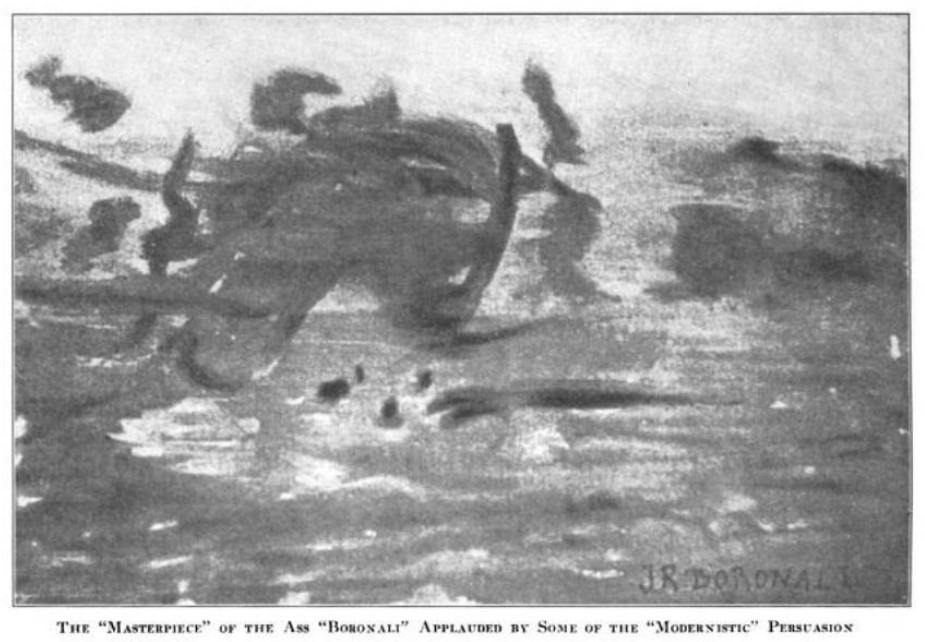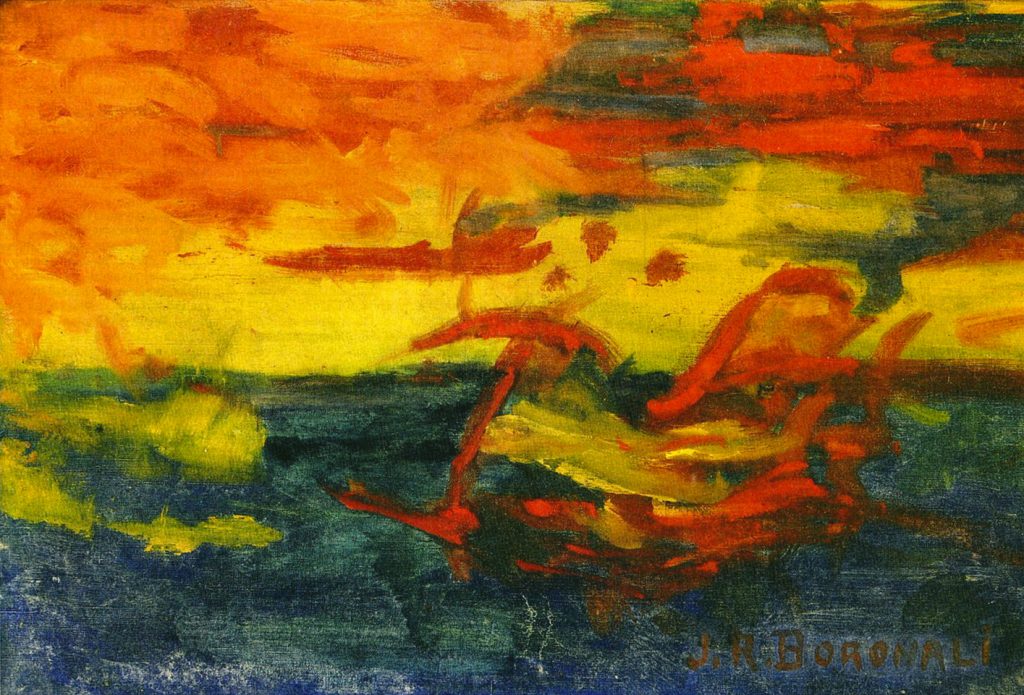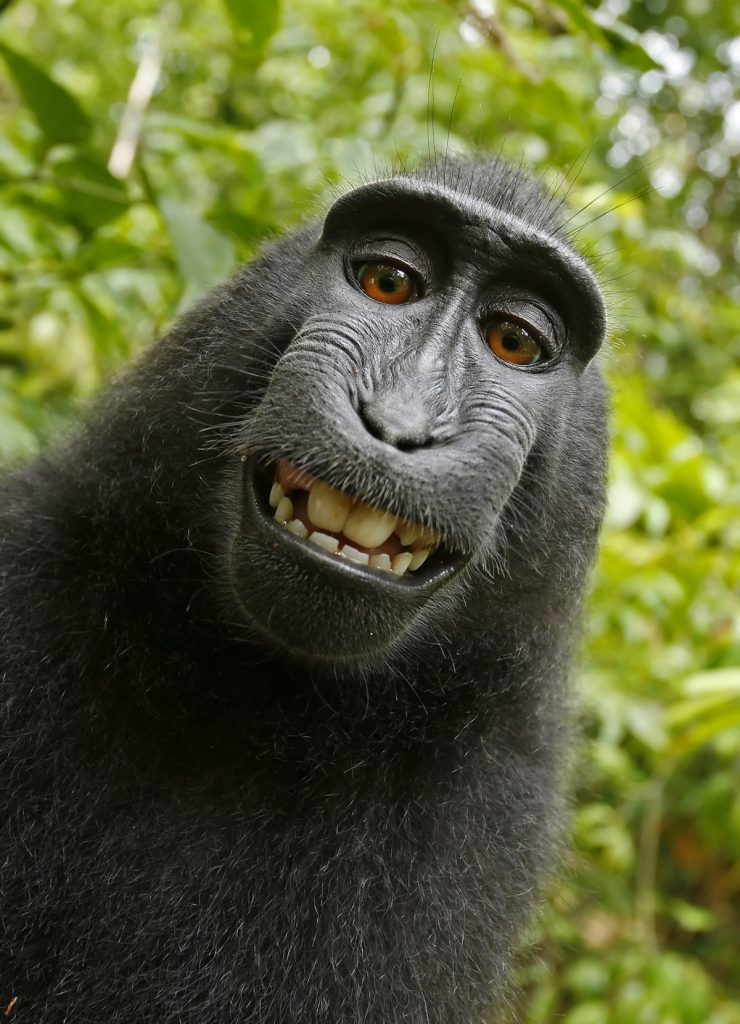Reading Michael Lobel’s Artforum article on confederate monument sculptor Frederic Ruckstuhl, whose 1910s rants against modern art as degenerate were a precedent for the nazis led me to Ruckstuhl’s magazine, The Art World.
Because I’ve been researching Duchamp’s earliest days in New York, I looked for Ruckstahl’s take on the 1913 Armory Show, where Nude Descending a Staircase was famously shown, or the 1917 Independent Exhibition, where Fountain famously wasn’t.
The short answer, that this outspoken critic of modern art had nothing to say about the most influential artist of the modern era, is worth bookmarking for later, when thinking of how art/information travels, and how history is constructed. Because The Art World did publish scathing commentary on the Independent, but it was so preoccupied by the travesties perpetrated by every “aesthetic insanity from cubism to futurism” against the ideal beauty of the female nude, it missed its greatest scoop.

In their takedown of the 1917 Independent in New York, The Art World warned that without proper gatekeeping, Art would be sullied by the kind of modernist hoax that befell the 1910 Salon des Indépendants in Paris. That’s where a Parisian critic submitted an abstract painting by a fictional Italian artist from a fabricated art movement, which–honhonhon!–turned out to have been painted by the tail of a donkey in a Montmartre cabaret.

There is a lot to unpack here. But first I wanted to see a better reproduction of the painting. Which is how I found Kevin Buist’s 2016 series of essays for the Michigan Quarterly Review. It was early 2016, and like so many of us, Kevin was swayed by the claims of those two trolls that Duchamp didn’t create Fountain, but had stolen it from Baroness Elsa. He (Kevin, not Marcel) then speculated on what would happen to contemporary art history if one of its foundational artworks turned out to be, not just phony, and not just stolen, but stolen from a woman?
[It’s worth noting that Julian Spalding & Glyn Thompson’s interest in proclaiming Fountain a fraud is exactly the same as Ruckstahl’s a hundred years earlier, and the nazis in between: to delegitimize modernism and replace it with classicism as part of a wresting of cultural power. I’m not saying they’re nazis; just that they have the same rhetoric and goals as nazis. It also needs to be pointed out that their case for Elsa and against Duchamp is far flimsier than they presented, and relies on ignoring a lot of Duchamp’s involvement in Fountain between its clubby creation/destruction in 1917, and its wider distrtibution/recognition beginning two decades later. This trollfest came to a head again this past spring.]
But back to Buist, who asks, Instead of Fountain, “What if the painting made by a donkey’s tail had been a turning point that set the trajectory of the entire history of art in the 20th century?” After seeing a better image of Adriatic, I am thinking, what if? I would like to play in this space, to inhabit this AU for a while.
I wanted for two days to be able to do this. I wanted to imagine an alternate art universe where action painting, or process-based abstraction, came 40 or 50 years earlier. Where Fauvist color changed everything. But I couldn’t, for two reasons. The painting does not allow it. It is extremely obvious that it was not entirely painted by a brush tied to an ass’s twitching tail. If anything, it was a nearly completed painting of the sun setting on the Adriatic, to which Lolo added some finishing touches. Lolo literally adds a smattering of non-representational marks; I couldn’t bring myself to say abstract, or even brushstrokes, because we know how they were applied. This is Lolo and Studio, but Studio is in charge. Because Lolo, the purported artist, is an animal.

When he comes to it, Buist considers this collaboration of donkey and humans as a Christov-Bakargievian opportunity for decentering humans from creativity. The discourse over Monkey Selfie would have been completely different.
But that was not the intention of the hoax, nor how it it played out: animals were not praised for their creativity; artists were likened to animals. Like the term Fauves a couple of years earlier, the reveal of Joachim-Raphael Boronali, the blustery leader of the new Excessivist Movement to be an ass with a brush tied to its tail was concocted by a reactionary critic to denigrate and dehumanize modernist artists, specifically Matisse and those around him.
In addition to being a bad faith attack, it was a failure on its own terms. A French scholar who researched the Lolo hoax found that the painting had, in fact, been considered croute (crust) by Salon organizers, who put it in the room with the other free-entry crap, and that it only got any attention after the critic/instigator revealed the whole thing. But inconvenient facts would not impede those determined to attack the decadent monsters making degenerate art. Two years later, an exhibition mocking the new Parisian painting opened in Moscow titled, “The Tail of an Ass,” an insult Krushchev repeated forty years later when he visited a show of Western abstract painting. In the 1950s, Et le soleil s’endormit sur l’Adriatique was purchased by a collector of traditional French landscapes; it is now the most notable painting in the collection he ended up donating to his Parisian suburb. We don’t need to imagine an alternate universe where this painting spawns a whole art movement, because we already live in it: the movement is reactionary, fascist-enabling, racist, homophobic, anti-intellectual anti-abstractionism.

Which reminds me of one of the first bad faith outrages of the Obama administration, when a messageboardful of wingnuts began attacking the decision to install Alma Thomas’s Watusi (Hard Edge), a 1963 appropriation and reworking of Matisse’s 1953 cutout l’Escargot in the White House.
And as I write this, the current president has issued an executive order calling for the creation of a “National Garden of American Heroes,” in which all sculptures are ordered to be “lifelike or realistic representations of the persons they depict, not abstract or modernist representations.” The order includes instructions for the public art-related apparatus of the executive branch to make proposals within 60 days for the statues, but also for the (re)placement by the federal government of statues in communities where they have recently been removed or torn down. The order was published as the president gave a speech at Mount Rushmore where he labeled as evil and un-American the people who oppose him and his confederate statues.
We are already living in the timeline dominated by this ass and his art, so no, I’m going to stick with Fountain and whoever made it.
